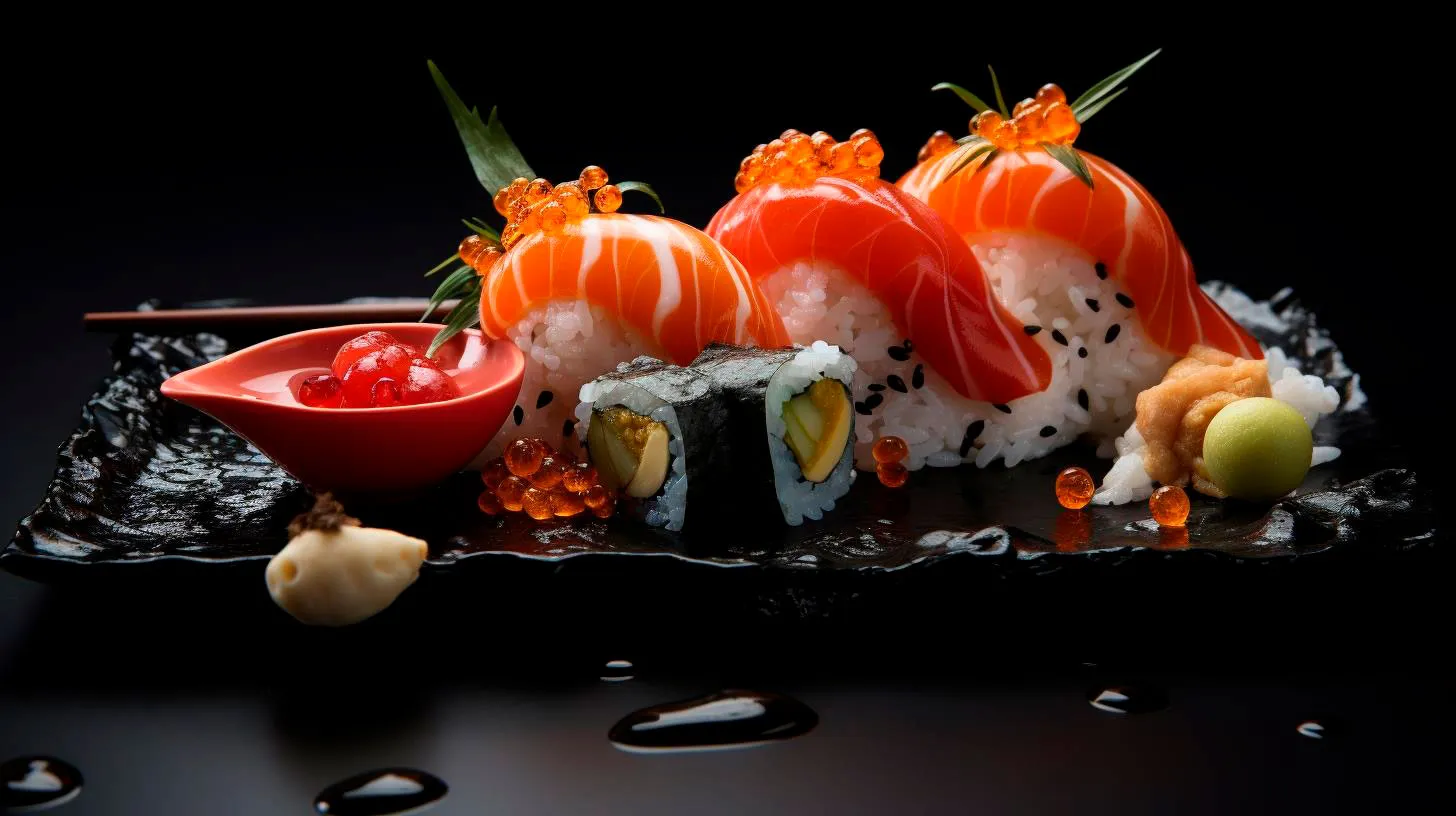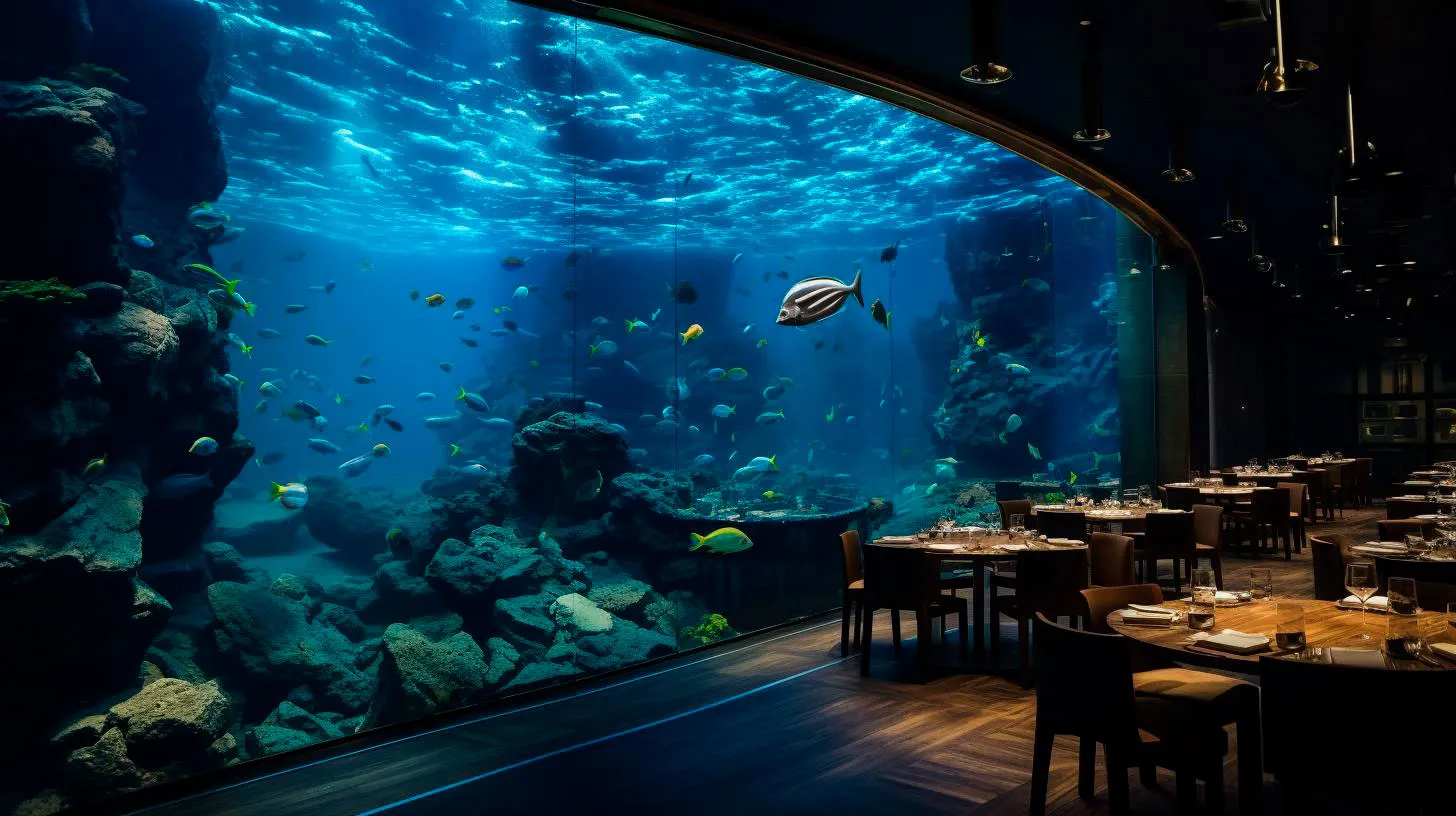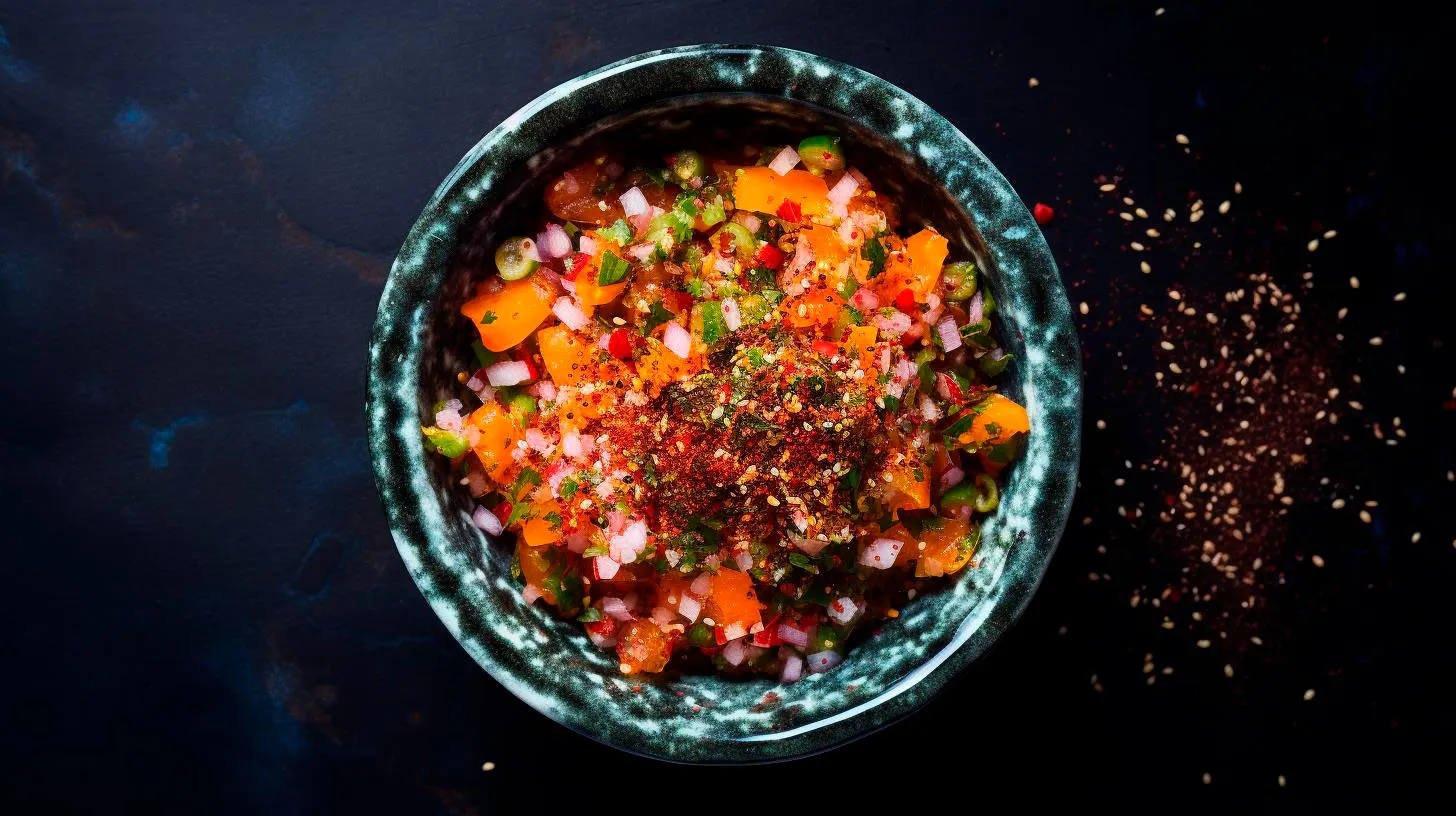From Sea to Table: Revolutionizing Sushi to Protect Marine Ecosystems
The unchecked fishing practices and mismanagement have resulted in the decline of various fish populations, threatening the delicate balance of the oceans.
Thankfully, a sea to table revolution is underway, aiming to transform the sushi industry and ensure the sustainability of our oceans. By adopting sustainable fishing practices, innovative technologies, and responsible sourcing, this movement is reshaping the way we enjoy sushi while safeguarding marine ecosystems for future generations.
The Problem: Unsustainable Fishing Practices
Traditional sushi restaurants often rely on a supply chain that is plagued by unsustainable fishing practices. Overfishing, destructive fishing methods like trawling, and the capture of juvenile fish are common issues that contribute to the depletion of fish stocks and disrupt marine ecosystems. With increasing consumer demand and inadequate regulations, the challenge to maintain a harmonious balance between sushi consumption and ocean conservation becomes more crucial than ever.
The Solution: Embracing Sustainable Sourcing
The sea to table movement champions the use of sustainable sourcing methods, ensuring that the ingredients used in sushi are obtained responsibly and with minimal impact on marine ecosystems. Here’s a closer look at some key solutions:
- 1. Aquaculture: By promoting responsible aquaculture, we can reduce the reliance on wild-caught fish and alleviate the pressure on depleted fish populations. Sustainable aquaculture involves the cultivation of fish in controlled environments, minimizing the use of antibiotics, and reducing the risk of escape and disease transmission.
- 2. Traceability: Implementing traceability systems enables the identification of each fish’s origin, ensuring that only legally and sustainably caught fish are sourced for sushi. This transparency allows consumers to make informed choices and support businesses that prioritize sustainability.
- 3. Ecosystem-Based Management: Adapting to sustainable fishing practices that consider the entire ecosystem is essential. Approaches like implementing fishing quotas, protecting sensitive habitats, and employing selective fishing methods help maintain biodiversity and support the recovery of vulnerable fish populations.
The Role of Technology
Technological advancements play a crucial role in revolutionizing the sushi industry and safeguarding marine ecosystems. Here are a few notable innovations:
- 1. Fish Tracking Systems: Advanced fish tracking technologies help monitor fish populations, their migration patterns, and behavior. This valuable data aids in implementing effective management practices to prevent overfishing and protect vulnerable species.
- 2. Blockchain: Blockchain technology provides a secure and transparent platform to track the journey of seafood from ocean to plate. This enables consumers to verify the sustainability and authenticity of the sushi they consume, promoting responsible sourcing.
- 3. Robotics: Robotics and automation are being leveraged in aquaculture facilities to optimize fish farming processes, minimize waste, and reduce the environmental footprint. These innovations create a more efficient and sustainable sushi production system.
The Benefits: A Win-Win Situation
The sea to table revolution offers numerous benefits, including:
- 1. Conservation of Marine Ecosystems: By adopting sustainable practices, we can protect marine habitats, preserve biodiversity, and support the recovery of endangered fish populations.
- 2. Economic Growth: Responsible fishing practices and sustainable aquaculture contribute to the growth of local economies, providing income and employment opportunities for coastal communities.
- 3. Healthier Seas: Taking care of our oceans means ensuring a healthier future for marine life and, in turn, a sustainable source of seafood for future generations.
Key Takeaways
The sea to table revolution is changing how we approach sushi consumption. By embracing sustainable sourcing, innovative technologies, and responsible fishing practices, we can protect marine ecosystems while indulging in our favorite delicacies. Here are the key takeaways:
- Switching to sustainable sourcing methods like aquaculture reduces overfishing and supports the recovery of fish populations.
- Traceability systems and blockchain technology ensure transparency, allowing consumers to choose responsibly sourced sushi.
- Using advanced technologies like fish tracking systems and robotics optimizes processes and reduces the environmental impact.
- By supporting the sea to table revolution, we contribute to the conservation of marine ecosystems, promote economic growth, and secure a sustainable future for sushi lovers worldwide.
Let’s appreciate sushi not just for its flavors but also for the steps being taken to protect our oceans. Together, we can revolutionize the sushi industry and ensure a bountiful sea for generations to come.
Saving Our Oceans One Sushi Bite at a Time: Embracing Sustainability
Sushi has gained immense popularity worldwide, with sushi bars and restaurants popping up in every corner of major cities. However, the demand for sushi has put a strain on our oceans and the delicate balance of marine ecosystems. Unsustainable fishing practices and the overconsumption of certain fish species have led to a significant decline in fish populations.
The Environmental Impact of Unsustainable Sushi Practices
To fully understand the gravity of the situation, let’s take a look at some eye-opening statistics:
- According to the Food and Agriculture Organization of the United Nations, over 70% of the world’s fish species are either fully exploited or depleted.
- A study published in the journal Marine Policy found that 93% of the world’s largest fish populations have declined due to overfishing.
- Approximately 25% of global fish catches are discarded as bycatch, leading to unnecessary wastage and ecological damage.
These staggering numbers highlight the urgent need for sustainable practices in the sushi industry. By making responsible choices and encouraging sustainable practices, we can safeguard our oceans and ensure a healthier future for both marine life and ourselves.
The Role of Sustainable Sushi Restaurants
Thankfully, there is a growing number of sushi restaurants that prioritize sustainability. These establishments work closely with seafood suppliers who follow sustainable fishing practices and prioritize species conservation. By choosing to dine at these restaurants, we can actively support their mission and contribute to the preservation of our oceans.
Here are some key advantages of patronizing sustainable sushi restaurants:
- Preservation of fish populations: Sustainable sushi restaurants prioritize sourcing fish species that are abundant and not at risk of overfishing. This helps to maintain a healthy balance in marine ecosystems.
- Reduced carbon footprint: Many sustainable sushi restaurants embrace local sourcing and environmentally friendly farming methods, reducing the carbon footprint associated with transporting seafood over long distances.
- Promotion of responsible fishing practices: Sustainable sushi restaurants actively support fishery improvement projects and work with suppliers who employ responsible fishing practices, such as using non-damaging fishing gear and avoiding destructive fishing methods.
- Enhanced dining experience: Sustainable sushi restaurants often go the extra mile to provide customers with a unique dining experience by offering innovative and creative sushi options made with sustainably sourced ingredients.
Steps Towards Sustainable Sushi Consumption
As individuals committed to preserving our oceans, there are several steps we can take to support sustainability in the sushi industry. Here are some key takeaways:
- Choose sustainable options: When dining out or buying sushi to take away, opt for restaurants and suppliers that prioritize sustainability. Look for certifications like the Marine Stewardship Council (MSC) or the Aquaculture Stewardship Council (ASC) when making your choices.
- Explore plant-based alternatives: Consider trying sushi options that incorporate plant-based ingredients instead of seafood. Vegan and vegetarian sushi options are becoming more common and can be just as delicious as traditional ones.
- Spread awareness: Share your knowledge and passion for sustainability with others. By educating friends, family, and colleagues about the importance of making sustainable choices, you can contribute to a broader shift towards a more sustainable future.
- Support sustainable aquaculture: Look for sushi restaurants that source their seafood from responsible aquaculture operations. These operations prioritize environmental sustainability and minimize the impact on wild fish populations.
In conclusion, sustaining our oceans one sushi bite at a time may seem like a small step, but collectively, these choices can make a significant difference. By embracing sustainability in the sushi industry and making informed choices, we can help protect our oceans, preserve diverse marine life, and create a healthier planet for future generations – all while enjoying a delicious plate of sushi.
Sustainable Sushi: The Delicious Path Towards a Greener Future
Fortunately, there is a delicious path towards a greener future in the world of sushi. By incorporating sustainable practices and opting for environmentally friendly ingredients, both sushi enthusiasts and sushi restaurants can make a positive impact on the environment. Let’s explore some ways to make sustainable sushi a reality:
1. Responsible Sourcing: The Key Ingredient
The backbone of sustainable sushi lies in responsible sourcing. It is essential to choose suppliers who prioritize sustainable fishing practices and source their seafood from well-managed fisheries. By doing so, we can contribute to preserving marine ecosystems and protecting vulnerable species.
Key takeaway:
- Opt for seafood sourced from sustainable fisheries to promote healthy oceans.
- Support suppliers who prioritize responsible fishing methods.
2. Embracing Local and Seasonal Ingredients
Another step towards sustainable sushi is to embrace local and seasonal ingredients. By doing so, we reduce the carbon footprint associated with long-distance transportation and support local communities. Additionally, using seasonal ingredients ensures the availability of fresh produce while reducing the need for excessive preservation methods.
Key takeaway:
- Choose sushi options that feature local and seasonal ingredients.
- Savor the flavors of fresh produce without compromising on taste.
3. Innovative Plant-Based Alternatives
Sustainable sushi doesn’t have to revolve solely around seafood. The rise in demand for plant-based alternatives has led to the development of innovative options for creating delicious vegetarian and vegan sushi. Ingredients like tofu, tempeh, and mushrooms can be transformed into mouthwatering sushi rolls and nigiri, showcasing the endless possibilities of sustainable sushi.
Key takeaway:
- Experiment with plant-based alternatives to traditional sushi ingredients.
- Explore the exciting flavors and textures of vegetarian and vegan sushi.
4. Minimizing Food Waste
Addressing the issue of food waste is crucial in creating a sustainable sushi culture. By adopting efficient inventory management systems and educating staff about reducing waste, sushi restaurants can minimize their ecological footprint. Additionally, encouraging customers to only order what they will consume and providing smaller portion sizes can help reduce wastage.
Key takeaway:
- Promote responsible consumption and mindful ordering.
- Embrace efficient inventory management systems to reduce waste.
5. Educating and Raising Awareness
Education plays a pivotal role in achieving a greener future for sushi. By raising awareness about sustainable fishing practices, the importance of responsible sourcing, and the impact of individual choices, we can inspire a generational shift towards conscious consumption. Sushi restaurants can also play a significant role in educating customers about sustainable sushi options and the positive impact of their choices on the environment.
Key takeaway:
- Spread the word about sustainability through various channels.
- Sushi restaurants, be an advocate for eco-friendly practices and educate your customers.
Conclusion
Sustainable sushi embraces the notion that we can enjoy our favorite culinary pleasures while protecting our planet. By making conscious choices in sourcing ingredients, embracing alternatives, minimizing waste, and educating others, we can pave the way for a greener future. Let’s come together as sushi lovers to support sustainable practices in the sushi industry, ensuring that we can enjoy this exquisite cuisine for generations to come.
Exploring the Evolution of Sushi for Ecological Restoration
In recent years, sushi has taken on a new role, one that contributes to the restoration of our fragile ecosystems.
Sustainable Sourcing
Traditionally, sushi was predominantly composed of fish species that are now heavily overfished, putting a significant strain on their populations. However, the industry is gradually shifting towards more sustainable sourcing practices. This means that sushi restaurants are now embracing a wider range of fish species, many of which were previously overlooked.
By expanding their menu to include less-popular fish, sushi establishments are able to reduce the demand for endangered species and alleviate the pressure on their populations. This shift not only contributes to the preservation of marine ecosystems but also provides a valuable education to consumers about the importance of sustainable seafood choices.
- Less reliance on overfished species
- Preservation of marine ecosystems
- Promotion of sustainable seafood choices
Plant-Based Alternatives
Another exciting evolution within the sushi industry is the rise of plant-based alternatives. As more people opt for vegetarian or vegan diets, restaurants are adapting to cater to these changing preferences. Innovative sushi rolls featuring ingredients such as avocado, cucumber, and tofu are now gracing the menus of sushi establishments worldwide.
Not only do plant-based sushi options provide more variety for customers, but they also offer numerous environmental benefits. By reducing the consumption of animal products, we can decrease the carbon footprint associated with livestock farming. Embracing plant-based sushi is a significant step towards a more sustainable future, where everyone can enjoy this delicacy guilt-free.
- Increased variety for vegetarian and vegan customers
- Reduced carbon footprint through plant-based ingredients
- Promoting sustainability for a more ethical consumption
Embracing Local Ingredients
In an era where globalization has made it possible to access ingredients from all corners of the world, the sushi industry is embracing the concept of local sourcing. By utilizing regional and seasonal ingredients, sushi chefs are able to support local farmers and reduce the carbon emissions associated with long-distance transportation.
Furthermore, this shift towards local ingredients ensures that sushi restaurants can provide the freshest and highest quality dishes to their customers. With an emphasis on freshness and sustainability, this trend has not only transformed the culinary experience but has also had a positive impact on local economies.
- Supporting local farmers and economies
- Reducing carbon emissions related to transportation
- Providing fresher and higher quality sushi
The Future of Ecological Restoration
As sushi continues to evolve, its role in ecological restoration becomes increasingly significant. The industry’s commitment to sustainable sourcing, embracing plant-based alternatives, and utilizing local ingredients showcases a bright future for both the cuisine and the environment.
By raising awareness about the impact of our food choices and promoting sustainable practices, sushi restaurants are contributing to a more ecologically conscious society. So, the next time you savor a piece of sushi, remember that you are not only enjoying a culinary masterpiece but also supporting the restoration and preservation of our planet’s precious ecosystems.



